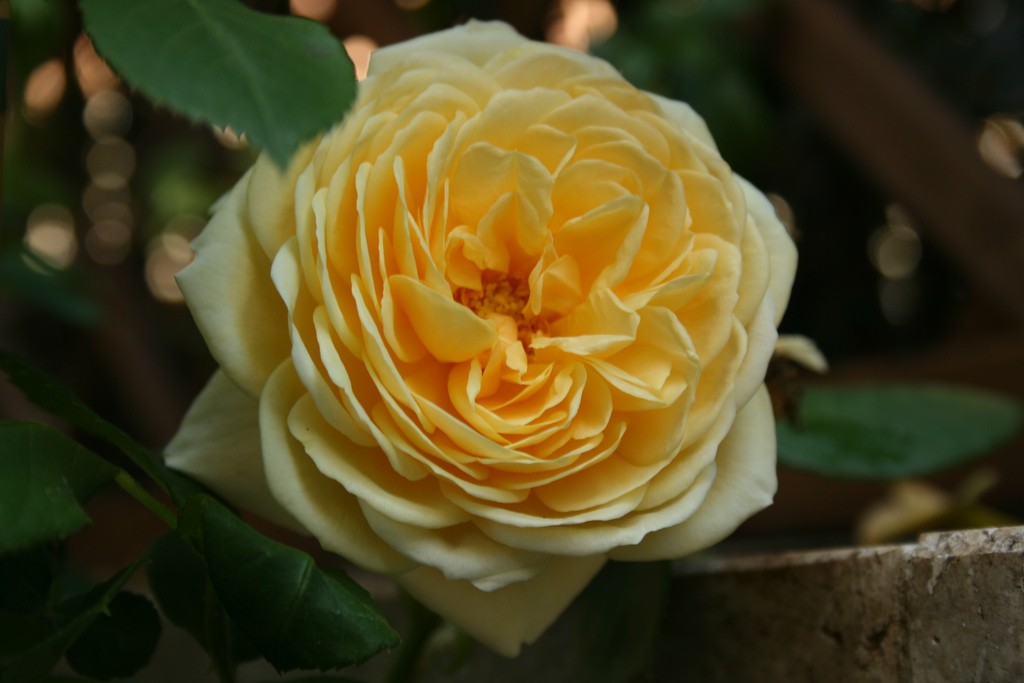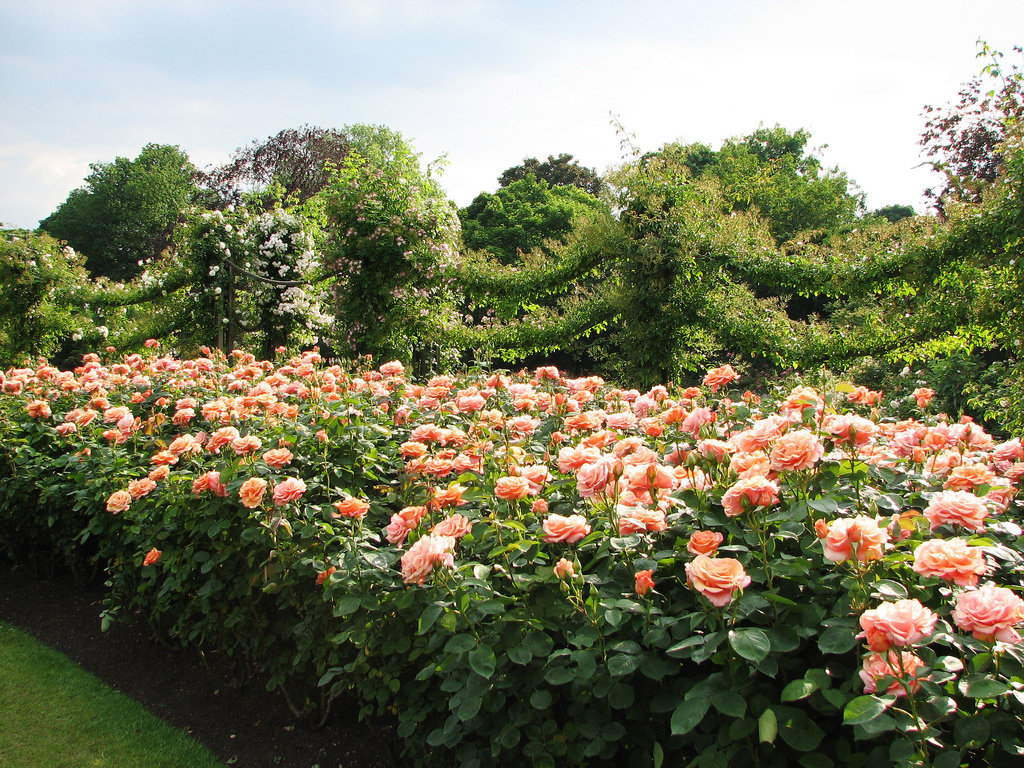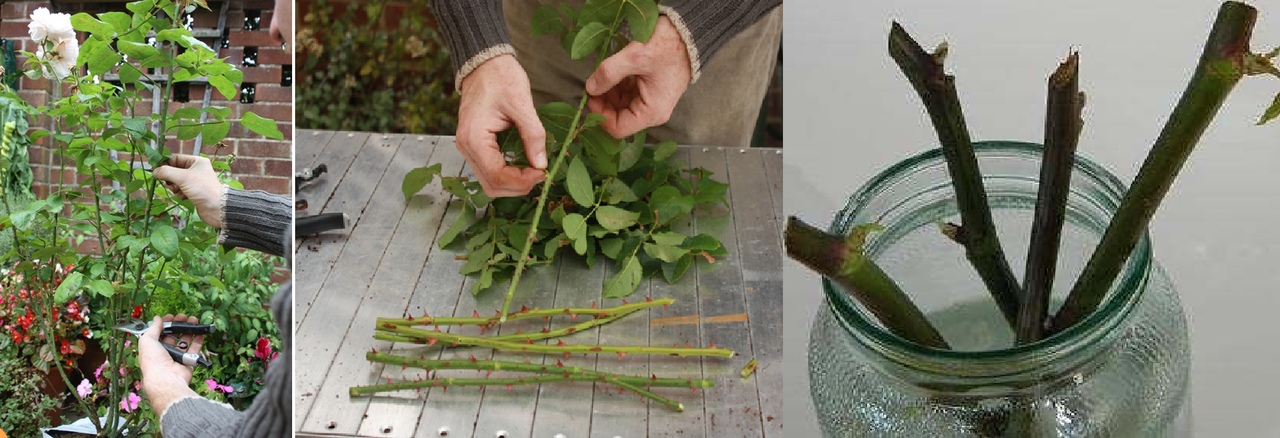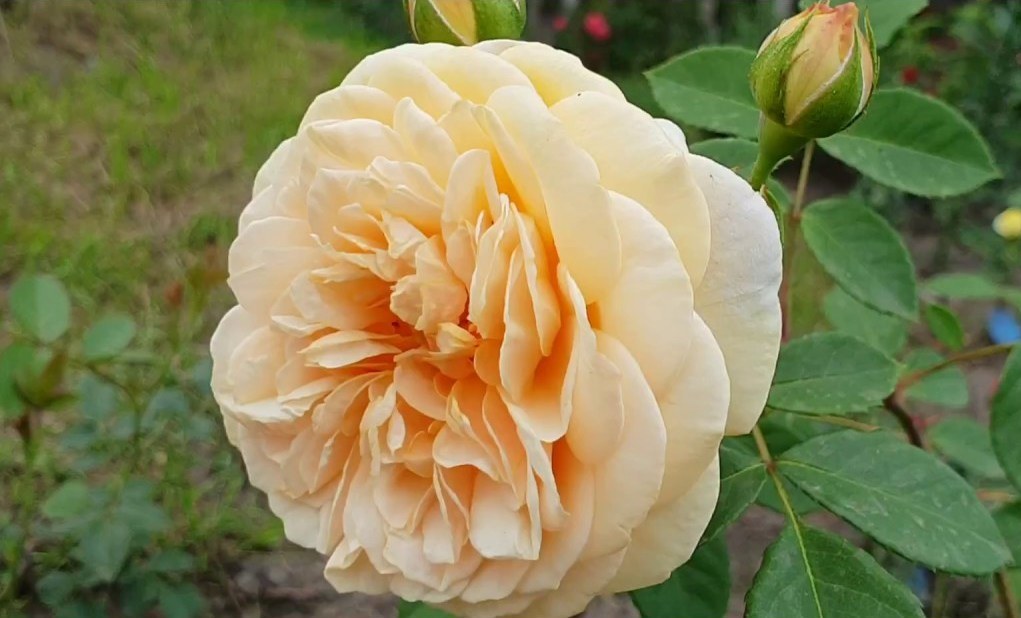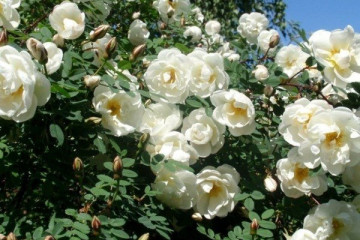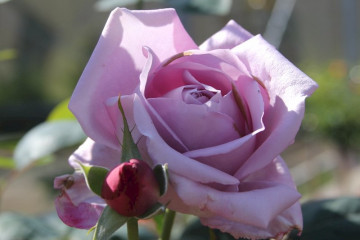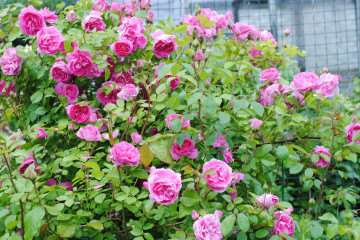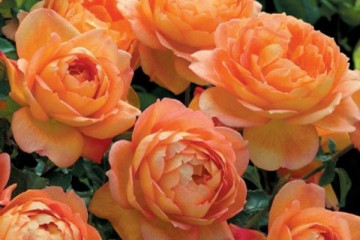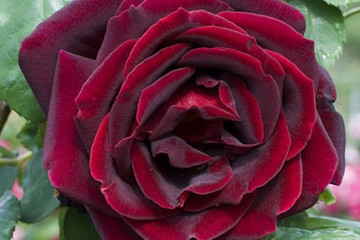Rose Teasing Georgia (Teasing Georgia) - variety description
Content:
Rosa Tezing Georgia is one of the representatives of English roses. An exquisite and elegant variety of park crops is an adornment of any greenhouse. The original type of flowering with a fruity aroma attracts gardeners from many countries. The plant is popular with florists and even has show awards.
Characteristics of the variety, history of creation
The flower has a romantic origin and is named after the journalist from Germany, George Tornow. Her husband, journalist and TV presenter, Ulrich Mayer, decided to surprise his wife with an unusual gift for the anniversary. An English rose study firm helped him in this. Thanks to the breeder David Austin and a family of German journalists, in 1998, another variety of roses saw the light - the climbing Djorzhina rose.
Its double, cupped flowers of lemon and honey shades reach 12 cm in diameter. The plant rarely produces one bud, more often 4-5 flowers per brush. A sprawling bush requires frequent pruning, in favorable conditions it can stretch up to 2 m in height. The leaves are light green, glossy. There are few thorns. The flowers exude a rich fruity aroma with notes of cream and honey, for which they received an award at the exhibition in the UK. The culture is climbing, therefore it needs supports for the formation of a bush.
Pros and cons of the variety
The disadvantages of the Georgia variety are inherent in all English roses by David Austin:
- negative reaction to heat in the form of crushing flowers and burning out their color;
- large weight of flowers, under the weight of which the shoot bends.
Plant benefits:
- abundant, multiple blooms throughout the season;
- good bushiness;
- beauty, petal shape;
- the size of the buds and their number;
- non-fading bright green foliage;
- frost resistance;
- disease resistance.
Use in landscape design
In landscape design, the rose, as a rule, is assigned the main role. Georgia looks good both in the company of other plants and in a single planting. It looks picturesque on a mown lawn or as a framing of a park path. The plant serves as a picturesque frame for arches, arbors, can be the basis of a curb or hedge. In a composition with smaller flowers and shrubs, this rose sometimes acts as a background. It is often used to decorate ponds and fountains.
Growing a flower
The process of planting English roses in the ground has some differences compared to other plants. For a comfortable flower sprout, you need to prepare a suitable planting site and high-quality planting material. They can be seedlings or seeds. Saplings grow well the root system, take root easier and are unpretentious in care. Seeds are more difficult. Many of them may simply not germinate. Another disadvantage of this method is the loss of parental characteristics of the species.
Drop off location
Teasing Georgia rose does not like open and brightly lit areas.She prefers shady places with little sunlight.
The right time for planting
Landing in the ground is carried out towards the end of spring. By this time, the earth has time to warm up to 12 ° C. Do not delay planting before the arrival of hot days. Sometimes the rose is planted in the fall, before early October. Planting with the onset of cold weather increases the risk that the seedling will not have time to grow roots and will die.
Preparing the soil for planting
The soil for the English rose Georgia Teasing should be fertile, loose, and breathable. The soil should be slightly acidic or neutral. With a large amount of clay, it is diluted with peat and coarse sand. Additives in the form of compost and manure are added to the sandy soil. If the acidity is high, it is lowered with wood ash, dolomite flour or chalk.
Disembarkation procedure
Planting the English rose Teasing Georgia requires special attention. The main stages of the procedure:
- Before planting, the roots of the seedling are treated with a root growth stimulator.
- For the plant, pits are formed, in diameter and depth equal to 50 cm.
- Organic fertilizers are applied to the grooves.
- The finished landing site is watered with water (1 bucket per hole) and left for a day.
- After 24 hours, a seedling treated with a growth stimulator is planted to a depth of 10 cm.
- After a day, the bush is abundantly watered and spud.
Plant care
The procedures for the care of the English queen of the garden differ little from the agricultural techniques of other varieties. This is regular watering, fertilizing, pruning and disease prevention.
Watering
The plant does not require high humidity. Moisturizing to a depth of 2 cm is sufficient.
Fertilizer
Within a year after planting the seedling, it is recommended not to feed the plant. It is believed that planting fertilizers will be enough for him.
From next year, top dressing is applied regularly. Nitrogen fertilizers are needed for stem formation, phosphorus fertilizers - for the development of buds with subsequent flowering. Adding potassium to the soil will increase the flower's resistance to frost.
Pruning
The procedure is carried out before autumn frosts and early spring. In this case, dry and broken branches are cut in order to build up young shoots. The stems can be cut to half or a fifth of the total length. Sometimes only side branches are removed.
Wintering a flower
For wintering, plants prepare a shelter in the form of a spruce forest and a film fixed on supports. Before this, the rose is treated with insecticides for fungal diseases. The branches are bent to the ground, added dropwise and covered.
Bloom
Flowering of a culture can be avalanche, repetitive and single. The rose usually blooms profusely, but bud formation on older shoots can shorten the flower's lifespan.
Rest and activity periods
Rose Teasing Georgia blooms in early summer and pleases with splendor of color until late autumn. The bushes abound in buds and bloom 3-4 times per season. The dormant period occurs during the winter months, although the green leaves can persist until mid-winter.
How to care during flowering
To help the flower during flowering, it is necessary to tie the protruding shoots to a horizontal support. Organic fertilizers are also applied.
If the rose does not bloom, you need to pay attention to the following factors:
- whether the landing site was chosen correctly;
- plant age - if necessary, the rose is rejuvenated by pruning;
- the presence of pests and diseases.
Propagation of a rose
There are several methods for propagating rose bushes:
- Seeds. This process is the longest, it is rarely used. There is a risk of a small percentage of seed germination.
- Air layering. The branch is bent to the ground and incised at the point of contact with the ground. The cut is treated with a growth stimulant and added dropwise. After the growth of the root, the plants are separated.
- Division of the bush. The bush is dug up and divided into parts, which are planted in different places.
- Cuttings. Cuttings from young shoots are cut in the spring. They are rooted and planted in a container. Cuttings are transferred to open ground only a year after cutting.
Diseases and pests
Rose Georgia is a disease-resistant crop, but powdery mildew and rust sometimes attack the flower. It happens that aphids attack a plant. For prevention, the bushes are sprayed with a soap and soda solution, manganese or a decoction of wood ash.
If the bush withers and dries without signs of pests and diseases, it is worth checking the roots for the presence of nematodes. In this case, the roots are washed and treated with insecticides. The flower is then planted elsewhere.
No description will convey the true beauty of the English rose Teasing Georgia. Many gardeners and florists are in love with this variety and are happy to grow it, despite the difficulties of care. Thanks to their efforts, this graceful and beautiful flower with a feminine name adorns garden plots and flower beds around the world.
